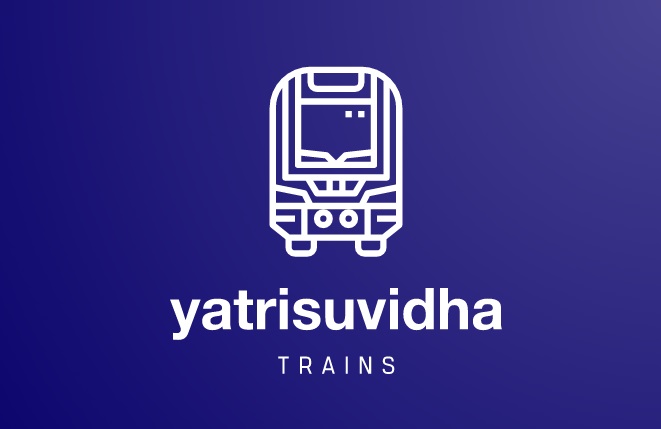
The Tatkal Waiting List (TQWL) system is a crucial component of Indian Railways, aimed at providing last-minute ticket booking opportunities for passengers who need to travel urgently. The Tatkal system, introduced in 1997, allows passengers to book tickets a day before departure, making it an essential service for those with immediate travel plans. However, due to high demand, Tatkal bookings often result in a waiting list (TQWL), and understanding how this system works can significantly help passengers in managing their travel arrangements.
This article will provide a comprehensive overview of the Tatkal Waiting List system, covering its mechanics, confirmation chances, booking tips, and factors that influence the likelihood of confirmation.
- Understanding the Tatkal Scheme
The Tatkal scheme was developed to address the demand for last-minute travel bookings. Tatkal tickets can be booked on the Indian Railways website (IRCTC) or through authorized railway agents. The booking window opens at 10:00 a.m. for AC classes and at 11:00 a.m. for non-AC classes, one day before the train’s departure date. However, the limited availability of seats and the high demand for Tatkal tickets often mean that many tickets end up on the Tatkal Waiting List (TQWL).
Key Points of the Tatkal Scheme:
Only a specific quota of seats is reserved for Tatkal bookings, which varies by train and class.
The Tatkal system is not available for all trains.
Tatkal tickets are non-refundable if they remain unconfirmed after the final chart preparation.
- What is the Tatkal Waiting List (TQWL)?
The Tatkal Waiting List (TQWL) is a type of waiting list specifically for Tatkal bookings. When all available Tatkal seats are booked, additional tickets can be booked as TQWL. If other passengers cancel their confirmed Tatkal tickets, passengers on the TQWL have a chance of their tickets getting confirmed. TQWL is distinct from the General Waiting List (GNWL) and other types of waiting lists because it operates independently and does not interfere with the general quota or its waiting list.
Types of Waiting Lists in Indian Railways:
GNWL (General Waiting List): For passengers booking tickets from the source station or a major station en route.
RLWL (Remote Location Waiting List): For passengers booking tickets from a station that lies between the train’s originating and terminating stations.
PQWL (Pooled Quota Waiting List): Applicable to smaller stations and shared across multiple stations.
TQWL (Tatkal Waiting List): Specific to the Tatkal quota, applicable for last-minute travel bookings.
Tatkal Waiting List tickets do not receive priority over General Waiting List (GNWL) or other quota waiting lists; instead, they are managed separately. If a ticket remains on TQWL after the final chart preparation, it is automatically canceled, and the passenger receives a refund.
- TQWL Confirmation Chances
Tatkal Waiting List tickets are generally challenging to confirm due to the limited number of cancellations from Tatkal quota bookings. However, the confirmation chances depend on various factors:
Class of Travel: AC Tatkal tickets tend to have lower confirmation chances compared to Sleeper Class, due to higher demand and lower availability.
Route and Train Popularity: Trains on high-demand routes (e.g., Delhi-Mumbai, Delhi-Kolkata) have lower confirmation chances for TQWL tickets, especially during peak travel seasons.
Travel Date: Holidays, weekends, and festival seasons reduce TQWL confirmation chances due to high demand.
Booking Time: The sooner you book after the Tatkal window opens, the better your chances of a lower TQWL position, which can improve confirmation odds.
Typically, TQWL tickets have a low probability of confirmation, especially in AC classes and during peak periods. However, in cases where Tatkal tickets are canceled by other passengers, TQWL positions closer to the cutoff point may get confirmed.
- How TQWL Works in Chart Preparation
In Indian Railways, the final reservation chart for a train is typically prepared 3-4 hours before departure from the originating station. At this point, the status of all waiting list tickets is finalized. For TQWL tickets, if they are not confirmed when the final chart is prepared, they are canceled automatically, and a refund is issued to the passenger. Unlike General Waiting List tickets, which may convert to RAC (Reservation Against Cancellation) if they reach a certain threshold, TQWL tickets are either fully confirmed or canceled.
Final Chart Preparation Process:
Any last-minute cancellations from Tatkal confirmed bookings are assigned to TQWL in order of their waiting list status.
If a TQWL ticket is confirmed, it moves from “Waitlisted” to “Confirmed” or “RAC” (if applicable).
Unconfirmed TQWL tickets are canceled, and a refund is issued to the booking account.
- Factors Affecting TQWL Confirmation
The probability of TQWL confirmation is influenced by several factors:
Number of TQWL Tickets in Queue: A higher number of waitlisted Tatkal tickets decreases the chances for tickets farther down the list.
Seat Availability per Train: Some trains have larger Tatkal quotas, which can positively impact TQWL confirmation chances.
Cancellation Patterns: The rate of cancellation by confirmed Tatkal ticket holders directly impacts TQWL ticket confirmation.
Past Performance of the Train: Some websites and apps offer historical data on waiting list confirmation patterns for specific trains, which can help passengers gauge the likelihood of TQWL ticket confirmation.
- How to Improve Chances of TQWL Confirmation
While there is no guaranteed method to ensure a TQWL ticket gets confirmed, these tips can increase the likelihood of successful booking and confirmation:
Book as Soon as the Tatkal Window Opens: Try booking as close to 10:00 a.m. (AC) or 11:00 a.m. (non-AC) as possible for a lower waitlist position.
Choose Less Popular Trains or Routes: If your travel dates are flexible, consider trains with historically lower demand.
Monitor Real-Time Seat Availability: Many railway apps offer real-time availability data that can help you determine whether to pursue a TQWL ticket or choose another train.
Consider Alternatives: If TQWL confirmation seems unlikely, explore other options like General Waiting List (GNWL) or Reservation Against Cancellation (RAC) tickets, which may have higher chances of confirmation.
- Refund Process for Unconfirmed TQWL Tickets
If a TQWL ticket remains unconfirmed after the final chart is prepared, it is automatically canceled, and a refund is processed. Refunds are usually credited back to the original payment method within 7 working days, although the time frame can vary depending on the payment method and booking platform (IRCTC or other agents).
Refund Rules:
No cancellation fee is charged for unconfirmed TQWL tickets.
The full amount is refunded, excluding any service charges levied by the IRCTC or payment gateway fees.
- Common Myths and Misconceptions about TQWL
Myth: TQWL Tickets Have a High Confirmation Rate: In reality, TQWL tickets have a relatively low confirmation rate due to limited cancellations.
Myth: TQWL Is the Same as GNWL: TQWL operates separately from GNWL and follows different rules for confirmation.
Myth: TQWL Can Be Upgraded to RAC: Only in rare cases where there is an unusually high number of cancellations, and TQWL tickets are close to confirmation, can they convert to RAC.
- Alternatives to Tatkal Waiting List
If you are booking last-minute and want to avoid the uncertainty of TQWL, consider these alternatives:
Premium Tatkal: A dynamic fare pricing system with a separate quota, offering higher-priced tickets that are less likely to end up waitlisted.
General Quota: Book in advance if possible under the General Quota, where confirmation chances are generally higher for waitlisted tickets.
Reservation Against Cancellation (RAC): RAC tickets guarantee seating (though shared) and have a higher likelihood of getting confirmed.
The Tatkal Waiting List system provides a critical service for Indian Railways passengers with urgent travel needs, but it comes with limitations and uncertainties. Understanding how TQWL works, knowing the factors that influence confirmation chances, and using strategic booking techniques can help travelers make informed decisions when booking Tatkal tickets. For high-demand routes or during peak seasons, alternatives like Premium Tatkal or planning in advance may provide a more reliable travel experience. While TQWL offers flexibility for last-minute plans, passengers should consider confirmation probabilities carefully to manage their travel expectations.

Leave a Reply